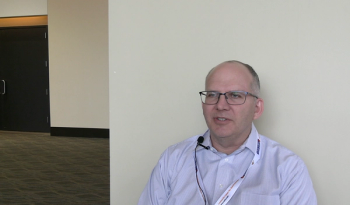
ICP-MS for Environmental and Bioimaging Research
Inductively coupled plasma–mass spectrometry (ICP-MS) has become a successful approach for fast, multielemental analysis, and analysts are applying it to a wide range of analyses, including geochemical, environmental, forensic, and medical studies. Uwe Karst is a Professor and Chair of the Analytical Chemistry Department at the University of Münster in Germany, and he and his group use ICP-MS for applications such as analyzing magnetic resonance imaging (MRI) contrast agents in river water, speciation analysis in a study of a disease related to renal failure, and examining the distribution of a labeling compound in mouse tumor cells and macrophages. He recently spoke to us about this work.
Inductively coupled plasma–mass spectrometry (ICP-MS) has become a successful approach for fast, multielemental analysis, and analysts are applying it to a wide range of analyses, including geochemical, environmental, forensic, and medical studies. Uwe Karst is a Professor and Chair of the Analytical Chemistry Department at the University of Münster in Germany, and he and his group use ICP-MS for applications such as analyzing magnetic resonance imaging (MRI) contrast agents in river water, speciation analysis in a study of a disease related to renal failure, and examining the distribution of a labeling compound in mouse tumor cells and macrophages. He recently spoke to us about this work.
In a recent study (1), you used hydrophilic interaction liquid chromatography (HILIC) combined with ICP–sector field MS to analyze local Münster surface waters for gadolinium-based MRI contrast agents introduced into the environment through a wastewater treatment plant. Your approach optimized the sample introduction into the plasma by means of desolvation. Can you please briefly describe the major features of your method?
Due to the fact that some of the gadolinium-based contrast agents are anionic, while others are neutral, HILIC separations are the method of choice for their separation rather than ion chromatography. Although peak shapes and loadability of the columns are limited compared to reversed-phase columns, the latter do not show retention of the analytes and can therefore not be applied. In this particular publication, desolvation was used to further improve the limits of detection.
Was there any particular advantage to using a sector-field MS system in that analysis?
Despite strong progress in the field of quadrupole-based mass analyzers for ICP-MS, sector-field instruments still offer the best limits of detection, particularly when operated at low resolution. As our approach is limited by the analyte signal itself rather than by the blank-as are many other approaches in the field of speciation analysis-superior instrumental sensitivity is directly transferred into improved limits of detection. Therefore, sector-field ICP-MS still is our preferred instrumentation for speciation analysis at ultratrace concentrations.
A second paper from your group describes the combination of ICP-MS, laser-ablation (LA)-ICP-MS, and HILIC–ICP-MS in a study of nephrogenic systemic fibrosis (NSF), a rare renal disease that occurs after the administration of gadolinium-based MRI contrast reagents (2). How were each of the three ICP techniques used to their advantage in the study?
The goal of this work was to provide a simple and efficient strategy for diagnosis of NSF based on the gadolinium concentration in the skin. NSF is characterized by deposits of gadolinium in the skin, presumably together with calcium and phosphorus as gadolinium calcium phosphates. Therefore, the first approach is to simply dissolve a small sample of a patient´s skin biopsy in nitric acid and to determine the total gadolinium concentration, ideally in comparison to a skin sample of the same patient, which is not affected by NSF. Only if an increased concentration of gadolinium is found in the sample affected by NSF, do further investigations have to be carried out to unambiguously diagnose the disease. This can best be done by elemental bioimaging using LA-ICP-MS. If high concentrations of gadolinium (mid-ppm range or above) are found and they correlate with the distribution of calcium and phosphorus, the NSF case is confirmed. In this particular study, we also successfully used speciation analysis based on HILIC–ICP-MS to find out if residues of the originally used contrast agents can still be detected.
Your group has also used LA-ICP-MS to monitor the distribution of lanthanide-complex labeling compounds on mouse tumor cells and macrophages (3). How did the distribution maps obtained using LA-ICP-MS compare with previous MRI data? What were the advantages of the LA-ICP-MS technique for this elemental bioimaging study?
MRI is one of the most powerful methods for medical imaging. However, the spatial resolution and the degree of chemical information obtained using this technique are limited. LA-ICP-MS is an ideal complementary imaging method to MRI for animal studies, because it provides highly sensitive and spatially resolved, quantitative analysis of the lanthanides, which are contained in the most frequently used MRI contrast agents. LA-ICP-MS allowed us to precisely quantify, based on matrix-matched standards, the concentration of the lanthanide markers in thulium-labeled tumor cells.
What are the next steps in your research?
The next steps will be improvements of the spatial resolution in LA-ICP-MS to spot sizes in the 1-µm range, as this will allow us to shift our focus from the tissue level to the cellular level. However, as the decrease of the spot sizes automatically leads to less ablated substance and therefore inferior limits of detection, this strategy will only be promising in those cases where analyte concentrations are not too low. Another important goal is to increase the number of spots analyzed per second, as LA-ICP-MS requires a significant analysis time of up to 50 hours for a single sample. This step requires improved ablation cells and dedicated cells for the ablation of soft (biological) materials.
References
(1) M. Birka, C.A. Wehe, L. Telgmann, M. Sperling, and U. Karst, J. Chromatogr. A1308, 125–131 (2013).
(2) M. Birka, K.S. Wentker, E. Lusmöller, B. Arheilger, C. Wehe, M. Sperling, R. Stadler, and U. Karst, Anal. Chem.87, 3321–3328 (2015).
(3) O. Reifschneider, K.S. Wentker, K. Strobel, R. Schmidt, M. Masthoff, M. Sperling, C. Faber, and U. Karst, Anal. Chem.87, 4225–4230 (2015).
Newsletter
Get essential updates on the latest spectroscopy technologies, regulatory standards, and best practices—subscribe today to Spectroscopy.





